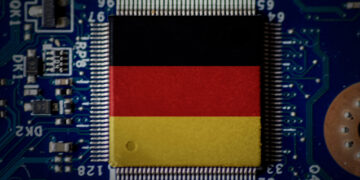Plunify, a glimpse at EDA in the cloud
Dr. Olivier Coudert
A month ago I stumbled upon Plunify, a startup that gives a fresh twist to EDA. Founded by HarnHua Ng and Kirvy Teo and established in Singapore, .
Plunify, a glimpse at EDA in the cloud
Dr. Olivier Coudert
![]()
![]()
A month ago I stumbled upon Plunifyh, a startup that gives a fresh twist to EDA. Founded by HarnHua Ng and Kirvy Teo and established in Singapore, Plunify provides online access to various FPGA synthesis tools in the cloud. Through a slick web 2.0 interface, the user submits its design, which is then synthesized for a range of timing/area trade-offs on various FPGA devices. Once done the user can look at the different results in terms of both devices and performances (see an example here). The whole process is streamlined and fully automated.
Plunify’s motto is to simplify the FPGA design process. The founders’ claim is that there are too many, somewhat disjointed steps, to produce an operational FPGA: synthesis, IPs, place-and-route, testing, debugging, many steps which yield much iteration before reaching the desired performance trade-off. That is not including the hassle to install and maintain the software, as well as the hardware resources. Last but not least, it is difficult to compare performances for multiple devices across multiple FPGA vendors –and device price should eventually be part of the trade-off picture.
Plunify aims at making FPGA design as simple as possible. Its use of Amazon’s cloud infrastructure results in a platform that abstracts unnecessary details away from users. Using the cloud also significantly speed up synthesis and place-and-route for multiple trade-offs. Plunify’s current beta platform supports Altera and Xilinx, as well as two open source simulators, Icarus Verilog and GHDL.
Plunify is currently offering three different packages: Walk, Run, and Fly. Each package includes 750 hours in the cloud (this is one full CPU time month), with full access to Xilinx and Altera devices and IPs. CPU speed, RAM and disk space increases with the level of the package, starting at 1.7Gb RAM and 1Gb disk space with “Walk”. Although pricing is not fully frozen, the base “Walk” package should be available for around $350 USD. Given the service it provides, this is a very compelling value.
Plunify is currently working on new features. One consists in allowing the user to input a range of timing constraints to let Plunify’s cloud-based platform explore these optimization scenarios in parallel, which will come up with optimum solutions in a fraction of the time an iterative flow would take. Another is to enable online collaboration and version control for round-the-clock, distributed design teams.
Granted, automatically exploring a range of timing constraints in parallel is not totally new. Both Xilinx and Altera, as well as some EDA vendors, have works in progress in that area. But Plunify pushes automation and ease-of-use way further: on-line, vendor agnostic, diligent performance tradeoffs delivery. When it comes to being in the cloud, security is design houses’ top concern. Plunify uses SSL for all communication to its website, and it uses the proven and pretty much de-facto standard Amazon S3 for storage. Still I anticipate that security will be one of the major hurdle to Plunify’s success. The next year will show how Plunify is received by the FPGA design community. Personally, I like to think that Plunify is a hint at the future of EDA: online, streamlined, and in the cloud. And of course, a totally different business model.
| {loadposition content-related} |





























